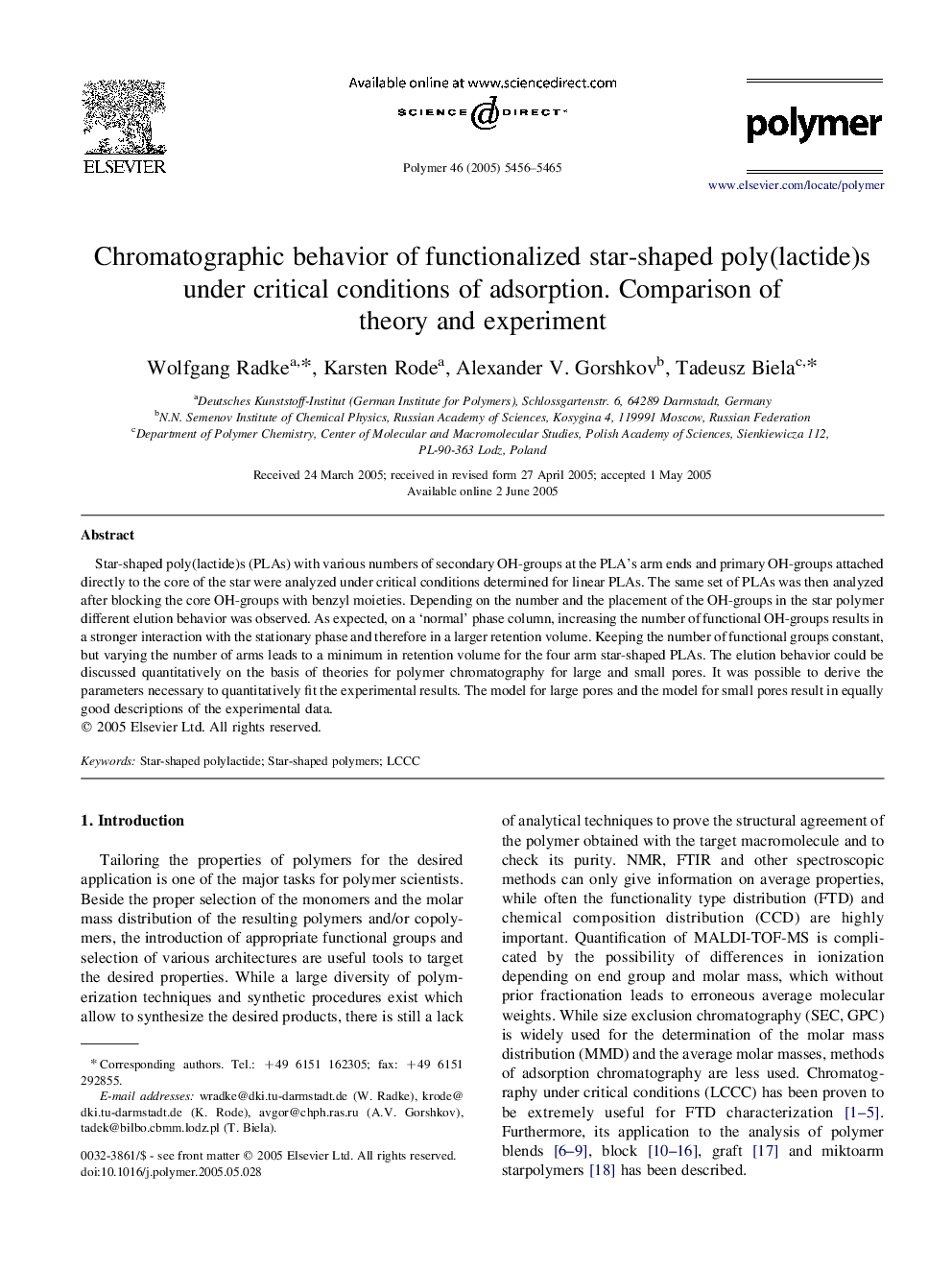| Article ID | Journal | Published Year | Pages | File Type |
|---|---|---|---|---|
| 5190881 | Polymer | 2005 | 10 Pages |
Star-shaped poly(lactide)s (PLAs) with various numbers of secondary OH-groups at the PLA's arm ends and primary OH-groups attached directly to the core of the star were analyzed under critical conditions determined for linear PLAs. The same set of PLAs was then analyzed after blocking the core OH-groups with benzyl moieties. Depending on the number and the placement of the OH-groups in the star polymer different elution behavior was observed. As expected, on a 'normal' phase column, increasing the number of functional OH-groups results in a stronger interaction with the stationary phase and therefore in a larger retention volume. Keeping the number of functional groups constant, but varying the number of arms leads to a minimum in retention volume for the four arm star-shaped PLAs. The elution behavior could be discussed quantitatively on the basis of theories for polymer chromatography for large and small pores. It was possible to derive the parameters necessary to quantitatively fit the experimental results. The model for large pores and the model for small pores result in equally good descriptions of the experimental data.
